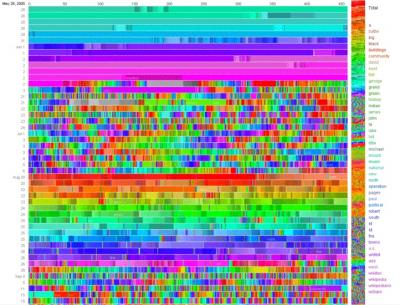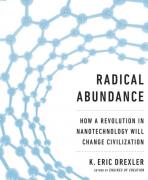I haven't posted much lately about my secular life. That's because my job as a Business Analyst (BA) at WellStar Health Systems has been getting more and more intensive.
This prompts me to start trying to capture my thoughts about what it means to be a business analyst nowadays. This is not an old profession. It's sort of a result of the move by IT and other organizations to go formal and certifications-based on how they do 'projects'. Various organizations have attempted to set up Project Management Offices (PMOs) and to hire Project Managers (PMs) with formal training (usually (Project Management Professional (PMP) certification from the PMI institute).) But they've realized that there are gaps in the machine. The business analyst role was created largely to attempt to fill one of the big gaps. And as you might be getting an understanding from this intro text, much of the work of BAs seems to involve understanding an endless array of TLA's (Three Letter Acronyms.) TLAs are the words of the priesthood. In any profession, these acronyms are the way that the high practitioners obscure and confuse everyone else about what it is that they are really doing. And BAs are supposed to step in and interpret the words of the high priests to everyone else. Well, that's part of it.
 I'm going to comment on the BA profession from an 'outside the walled garden' perspective. I have not yet sought nor achieved a business analyst certification, although I've had some training in the theories, and have little doubt I can pass the test if I need to. In the BA world, the certification is mostly one of the certs offered by the IIBA (International Institute of Business Analysis), such as the CBAP (Certified Business Analyst Professional). See what I mean about TLA's? I am a member of the IIBA. I joined last year when my employer offered to pay the annual $150 membership fee. I've even gone to a couple of meetings. It was nice to meet other weirdo's like me.
I'm going to comment on the BA profession from an 'outside the walled garden' perspective. I have not yet sought nor achieved a business analyst certification, although I've had some training in the theories, and have little doubt I can pass the test if I need to. In the BA world, the certification is mostly one of the certs offered by the IIBA (International Institute of Business Analysis), such as the CBAP (Certified Business Analyst Professional). See what I mean about TLA's? I am a member of the IIBA. I joined last year when my employer offered to pay the annual $150 membership fee. I've even gone to a couple of meetings. It was nice to meet other weirdo's like me.
Certification for a BA has been fairly straight-forward up until now, which is why the PMI decided to step in recently and create their *own* cert for BA's. Why keep things simple? It doesn't serve their purposes. I'm going to try to write up my thoughts about this move by the PMI in a later blog entry. It's a big topic.
So I don't have a CBAP. I'll probably go get one in the next couple months, just because it's getting harder and harder to say you are a BA without having it. Not impossible, just harder. But, given that state, it means I'm working as professional BA but without all of the indoctrinational bullshit of the certification organization overlaid. So I want to try to capture my current perspective on what this job entails before it gets all mucked up by theory. I have considered myself a business analyst for about three years now. In that time, I've worked for four different organizations, in a fairly broad spectrum of industries, each with a varying level of project management immaturity. And more importantly, I've gone through three separate job hunts as a BA in two different states. It's a rapidly evolving profession, and even most of the people who do it don't have a good grasp on what, exactly, it is. In the next few posts, I'm going to try to capture my thoughts on that topic.

 I just happened to be on Google+ today when a posting came across the wire about Massimo Banzi's recent blog post on the Arduino blog. Massimo Banzi is, as most people know, one of the five founders of the Arduino open-source hardware movement. I first learned about the Arduino board by listening to a FLOSS Weekly episode in which he was interviewed. I truly believe he really is a believer in open source and the democratization of technology. So it's sad to hear that the core of the Arduino world is in the midst of a civil war. It seems that one of the other five founding members, Gianluca Martino, has gone and run off with a key Arduino trademark and started claiming the name through his company.
I just happened to be on Google+ today when a posting came across the wire about Massimo Banzi's recent blog post on the Arduino blog. Massimo Banzi is, as most people know, one of the five founders of the Arduino open-source hardware movement. I first learned about the Arduino board by listening to a FLOSS Weekly episode in which he was interviewed. I truly believe he really is a believer in open source and the democratization of technology. So it's sad to hear that the core of the Arduino world is in the midst of a civil war. It seems that one of the other five founding members, Gianluca Martino, has gone and run off with a key Arduino trademark and started claiming the name through his company.

 Personally, 2013 wasn't that bad, particularly compared to the Hell that were 2011 and 2012. But from a more global and holistic perspective, 2013 was one heck of a rocky ride. Just in an effort to capture some of my thoughts about what just happened to us all, I thought I'd try to capture my view of what was particularly good and particularly sucky about the 13th year of this latest millennium. I think I'll talk about many of these things in more detail in other posts, so I'm just going to skim the topics.
Personally, 2013 wasn't that bad, particularly compared to the Hell that were 2011 and 2012. But from a more global and holistic perspective, 2013 was one heck of a rocky ride. Just in an effort to capture some of my thoughts about what just happened to us all, I thought I'd try to capture my view of what was particularly good and particularly sucky about the 13th year of this latest millennium. I think I'll talk about many of these things in more detail in other posts, so I'm just going to skim the topics. While searching for a comparitive analysis between the features of the various versions of the desktop database application Microsoft Access, I was presented with an odd 13 minute long ad from Cisco on their new product supporting Big Data. Now, while I don't really understand what the product they were pitching actually WAS, I did key on one word in the presentation that I've heard more and more recently . . . 'Hadoop'.
While searching for a comparitive analysis between the features of the various versions of the desktop database application Microsoft Access, I was presented with an odd 13 minute long ad from Cisco on their new product supporting Big Data. Now, while I don't really understand what the product they were pitching actually WAS, I did key on one word in the presentation that I've heard more and more recently . . . 'Hadoop'. 

